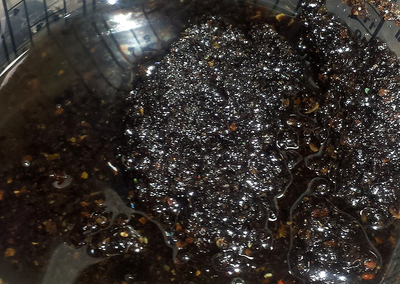Open Letter to Chevron Lubricants - Common Fuel Related Problems for Boat Engines
To Joe DeFina
Fuel Additives Business Manager
CHEVRON USA
Hi Joe -
 Joe DeFina |
I just finished reading the story you wrote on August 21st for the Chevron Lubricants website regarding common fuel problems for boat engines. ("Common fuel-related problems for boat engines And how to avoid them")
My finding and reading of your story came at a surprisingly coincidental time: I just finished responding to another story that blamed ethanol for boat engine problems. That response, if you're interested, can be found
at
Using E10 in Your Boat - A Lesson Learned.
 Marc J. Rauch |
What I like about your article is that you recognize that ethanol helps to reduce engine carbon emissions, and you clearly acknowledge that gasoline (and its components) is the cause of the gums and engine deposits that can plug fuel filters, and coat fuel injectors, carburetors, intake manifolds, intake ports and intake valves; which then results in a noticeable decrease in engine performance, power and fuel economy, while increasing emissions and drivability. As you may know, some people blame ethanol for all this. Yeah, I know, it makes me laugh, too. (I presume you're laughing)
My difficulty with your story is that you make it seem like ethanol is responsible for other problems that can occur in a boat's fuel tank and fuel system. For example, you blame ethanol for phase separation and the possibility of a layer of "corrosive" water laying on the bottom of the fuel tank. You do this by convoluting one of ethanol's best attributes as an engine fuel into something that's detrimental. You write:
"Gasoline oxygenated with 10 percent ethanol is capable of dissolving far more water than conventional gasoline alone. When this gasoline, ethanol and water blend is cooled, both the water and some of the ethanol become insoluble. The result is that the fuel separates into two layers or phases: an upper gasoline layer and a lower, ethanol-rich water layer. The gasoline layer will have a lower octane number and may cause knocking. The fuel also is less combustible; an engine will not run on the water-ethanol layer."
Generally speaking, water will form in a fuel tank because of condensation. Condensation is a naturally occurring process, and it will happen with or without the presence of ethanol in the tank - or for that matter, with or without the presence of any fuel whatsoever in the tank - a tank could be completely empty and yet condensation will form. I'm sure you know that condensation can form on car windows and outdoor furniture, both of which have nothing to do with engine fuel and are not made out of hygroscopic substances.
Incidentally, saying that water and some of the alcohol will become insoluble is incorrect. By definition, both water and alcohol are soluble, and they remain soluble while in a liquid state.
So here's the thing, Joe: if E0 (ethanol-free gasoline) is in the tank and condensation forms because of the surrounding temperatures, then you have gasoline and water in the tank. Although gasoline is a hygroscopic substance, it will only absorb a very, very small amount of water. I notice that you don't use the word "absorb," you use the word "dissolve." That's an interesting way to describe the process, but it's not quite correct. The process that takes place is that the water molecules are contained (fit around) the ethanol molecules. If you add an equal amount of water to ethanol, you actually lose some total volume because the water is "absorbed." However, because gasoline can only handle such a tiny amount of the water from condensation, you have the issue where you have gasoline and the (un-absorbed) water. This is the problem scenario that you describe in your article: a layer of water sitting at the bottom of the tank that won't ignite, and if the tank is made of a material that will rust, you have a rust corrosion problem - and this has all happened without any ethanol being present.
Moreover, if you're using non-leaded E0 gasoline, in order to have a high enough octane level to mitigate engine knock, the E0 gasoline is either more highly refined than conventional gasoline or the E0 will have to contain higher levels of aromatics like toluene and benzene. The higher refined gasoline can be considerably more expensive to the consumer than conventional refined gasoline, and the higher levels of aromatics create more harmful emissions, and adds to the cost...and then you still have the water issue to deal with.
Now, if you're using E10 or E15 (or E27 as they do in Brazil), then you have a fuel that is capable of absorbing a greater amount of water - thereby solving or minimizing the water issue, as well as having a higher octane fuel that will eliminate engine knock. In addition, the ethanol-gasoline blend will be less expensive than the ethanol-free gasoline and create less harmful emissions. I think almost anyone would agree that this is the better alternative.
In your description - the one I quoted above - you paint a picture where there is a layer of low-octane gasoline, and a layer of ethanol-rich water that won't combust. Yes, there could be a situation in which too much water has formed because of condensation and the ethanol is just not capable of dissolving/absorbing it. But for the water situation to get to this point (probably because the boat sat idle for an extended period of time) you would still have the water problem with E0, plus the issue of the ethanol-free gasoline going bad. So, either way, the boat owner would require some type of repair or attention from an engine mechanic. Therefore, you can't logically blame this repair or maintenance issue on ethanol since an ethanol-gasoline blend would have at least given the boat owner more of a buffer period before the engine required the repair attention.
By the way, if a situation exists in which the ethanol is doing its job and is capable of "handling" the amount of water that formed because of condensation, then there is no problematic scenario in which there is a layer of lower-octane gasoline and then a layer of un-combustible ethanol. The ethanol is combustible, it will ignite, that's the benefit of ethanol's hygroscopic characteristics. And in the combustion process, the "captured" water molecules will be vaporized and expelled out the exhaust tailpipe.
Furthermore, the depiction that there's a layer of lower-octane gasoline sitting on top of a layer of ethanol is of no consequence. From the moment that someone stepped aboard the boat, the fuel in the tank would "stir" and the ethanol and gasoline would begin to return to a state in which they are blended. Upon ignition, even if momentary ignition was "fueled" by an injection of lower-octane gasoline, the vibration of the engines would be sufficient to agitate the ethanol and gasoline back into the full blended state - any possibility for engine knock because of the lower-octane gasoline would be irrelevant. At this point, with the engine operating normally, the ethanol-gasoline blended fuel is the best fuel to be used because it will clean and protect the engine from the ill-effects of burning gasoline, without the need for any additional "fuel system treatment."
Joe, the point of all this is that while it is true to say that marine engines and fuel systems may require slightly different or greater care than an automobile engine, the vilification of ethanol is wrong and inappropriate. The problems that a boat owner will face are there whether or not ethanol is in the fuel tank. Ethanol doesn't exacerbate the problems, ethanol reduces the potential for problems. If Chevron wants to provide good maintenance tips to boat owners, great; but why sully the good intentions with lies and bugaboos? If Chevron has a product that can cost effectively reduce the potential of rust and corrosion from water in the fuel system, fine, but that water will be there even if ethanol is not in the fuel, so why make it seem as if ethanol is the cause?
As for Chevron's Techron Marine Fuel System Treatment being able to "refresh" fuel that's been sitting in the fuel tank, I would say it's wishful thinking, and I would more readily accept Mercury Marine's findings that there is no fuel additive that can refresh old gasoline.
If you feel I'm incorrect about any of the information I've presented I would love to hear why you or anyone at Chevron thinks so. But if you don't have any verifiable contrary information then you should consider editing and correcting your article.
I hope you have a wonderful fall and winter.
Sincerely yours,
Marc J. Rauch
Exec. Vice President/Co-Publisher
THE AUTO CHANNEL



